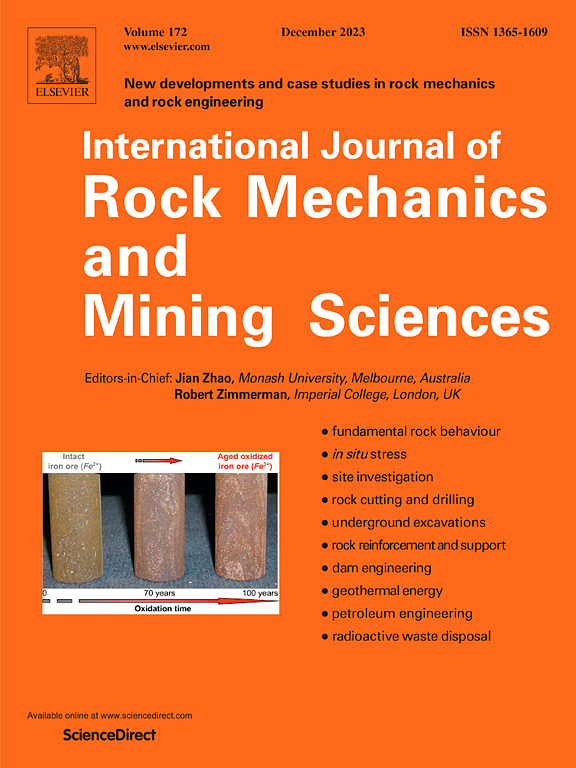Thermo-hydro-mechanical calibration modelling of the full-scale emplacement experiment and sensitivity analyses
IF 7
1区 工程技术
Q1 ENGINEERING, GEOLOGICAL
International Journal of Rock Mechanics and Mining Sciences
Pub Date : 2025-02-01
DOI:10.1016/j.ijrmms.2025.106031
引用次数: 0
Abstract
To understand the mechanism of the coupled thermo-hydro-mechanical (THM) processes in a repository, many laboratory or in-situ experiments have been carried out. One of these experiments is the Full-scale Emplacement Experiment (FE-Experiment) at the Mont Terri Underground Rock Laboratory. The FE-Experiment simulated the construction, waste emplacement, backfilling and early post-closure evolution of a spent fuel/vitrified high-level waste disposal tunnel according to the Swiss repository concept. The FE tunnel was excavated between November 2010 and May 2011, and following a ventilation period, three heaters (simulant waste canisters) were installed in the FE tunnel during 2014. The heaters sat on pedestals made of bentonite blocks and the remainder of the tunnel was filled with a granular bentonite mixture (GBM). In this paper, a fully coupled THM COMSOL model was built and used to calibrate the thermal, hydraulic and mechanical parameters based on the measurements in the FE-Experiment. A set of thermal, hydraulic and mechanical parameters was obtained through this calibration and the mechanism of the coupled processes in the FE-Experiment was explained using this model. The couped THM model was also used to perform sensitivity studies. A sensitivity study examined the influence of assumptions regarding the heater representation in the model (geometry, thermal properties, application of the heat load) and proved that these assumptions had a significant influence on the heater temperatures, the temperature of the placement tunnel sealing material but not in the Opalinus clay (OPA) rock surrounding the placement tunnel. A second sensitivity study proved that the initial pore water pressure in the Opalinus clay had a significant influence on the pressure accumulation over time. A third study confirmed that using as-placed (unsaturated) thermal conductivity for the bentonite sealing material can give conservative thermal results.
求助全文
约1分钟内获得全文
求助全文
来源期刊
CiteScore
14.00
自引率
5.60%
发文量
196
审稿时长
18 weeks
期刊介绍:
The International Journal of Rock Mechanics and Mining Sciences focuses on original research, new developments, site measurements, and case studies within the fields of rock mechanics and rock engineering. Serving as an international platform, it showcases high-quality papers addressing rock mechanics and the application of its principles and techniques in mining and civil engineering projects situated on or within rock masses. These projects encompass a wide range, including slopes, open-pit mines, quarries, shafts, tunnels, caverns, underground mines, metro systems, dams, hydro-electric stations, geothermal energy, petroleum engineering, and radioactive waste disposal. The journal welcomes submissions on various topics, with particular interest in theoretical advancements, analytical and numerical methods, rock testing, site investigation, and case studies.

 求助内容:
求助内容: 应助结果提醒方式:
应助结果提醒方式:


